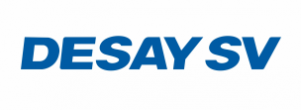Radio Asia 2015 was a very upbeat and well organised event. The host of the event, MRTV, did absolutely everything they could to showcase Myanmar and to entertain speakers and delegates. For example, at the gala dinner we were entertained by no less than Myanmar’s National Orchestra! Media coverage of the event was intense, especially during the first day which was attended by the Minister of Information but also continuing at a high level for the remainder of the event.
The conference itself was strongly “content” focussed especially on the role of “multimedia” and the “internet” in radio. Most of the attendees were from the programming side with high representation from the commercial FM networks that have only been established in Myanmar in recent years. Countering the “multimedia hype” the benefits of “one to many” nature of broadcast radio and the fragility and limitations internet and mobile phone networks were underlined by the supporters of both DRM and DAB+ alike providing some much needed balance to the event.
Other presentations underlined that only about 25% of Myanmar’s population lives in the cities meaning 75% of the population has very limited or no access to internet or even FM radio. In regard to the benefits presented by both the DRM and DAB+, Mr Min Min of She Than Lwin Media presented a comparison of the two standards and made it very clear that “no one shoe fits all” and, as he understood it, Myanmar authorities were considering both standards depending on geographical size and the population densities of target areas.
Consequently the presentation I made on behalf of the DRM consortium focussed on how DRM30 could be used to reach regional and remote areas using MW or SW. Also included was a low tech explanation of just how cost effective DRM could be to cover large areas using a single transmitter (thus leaving more money for content generation). This was completed by an explanation of how SW could be used to reach people in difficult (e.g. mountainous) terrain. A comparison of audio quality using analogue vs DRM on MW over a long distance was also well received. Questions from the floor asked about the relative costs of transmitters (analogue vs DRM) and also whether or not older transmitters could be modified in an economical way. Obviously the answers to these questions depend on multiple variables but, unlike any other digital standard, DRM can ensure the re-use and upgrade of existing infrastructure. This was the gist of the initial short form answer which interested participants a lot so the discussion continued after the session in a small group for some time into the lunch break.
As a conclusion it was clear to me that digital radio has a potentially bright future in Myanmar and that DRM is well positioned to play a very strong role. The most likely way forward (in my opinion) will be to use DRM and DAB+ according to audience location but there will be overlap in coverage so this underlines the critical need for cost effective multi-standard receivers. This does not apply just to Myanmar but also to many other Asian countries considering similar solutions, such as Indonesia and Vietnam.
Peter Streader, Ampegon AG

















